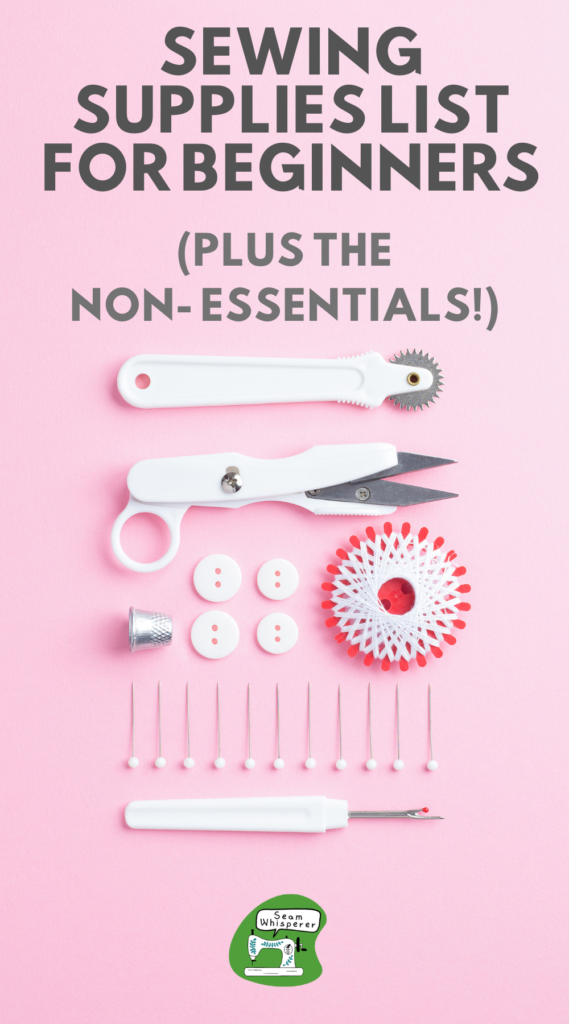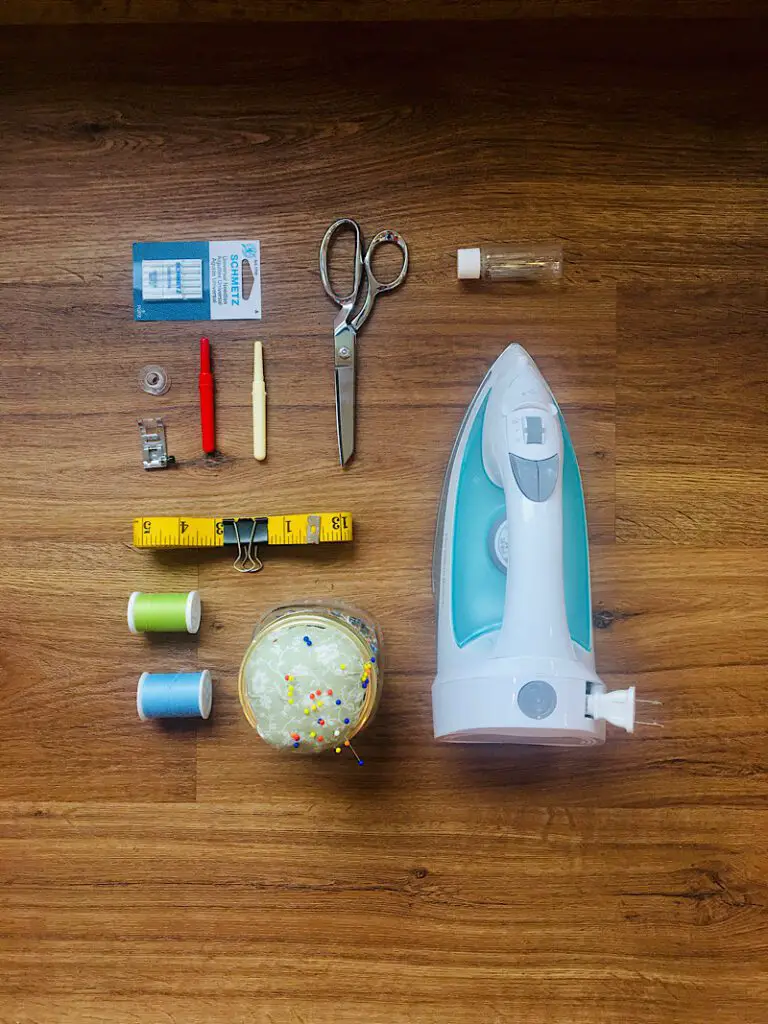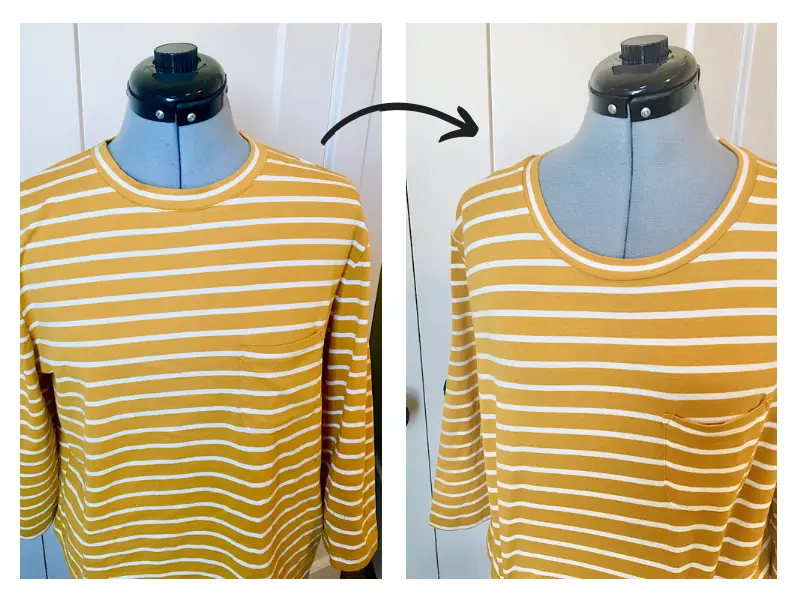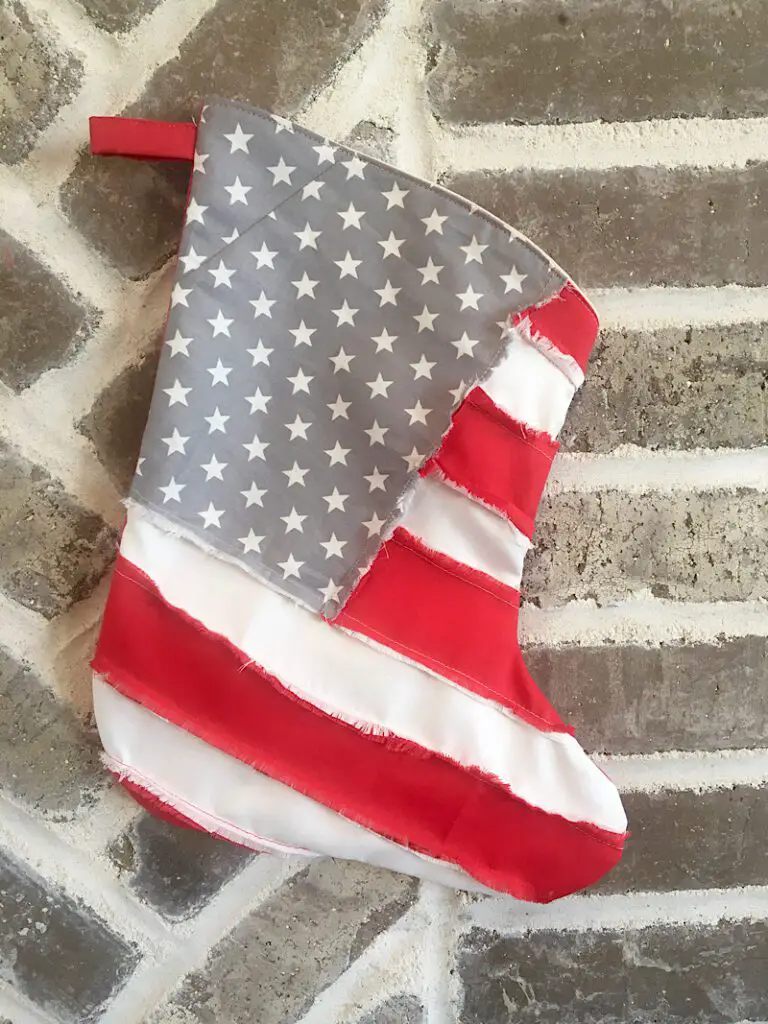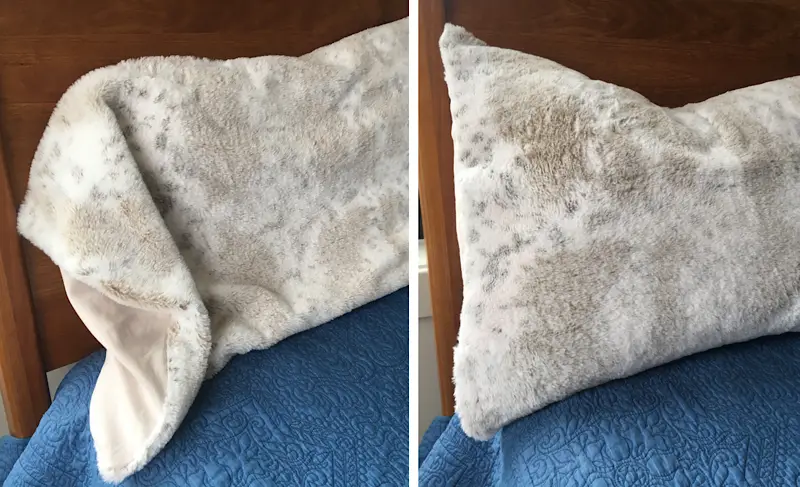Want to get into sewing but aren’t quite sure what supplies you actually need? I’ve been sewing for over 20 years so I know what is essential, and what you can do without for a while!
Beginner sewers can be confused about what is actually needed to learn to sew. There are SO many different sewing tools!
Today I have come up with this helpful list of sewing supplies that you probably will need to start off sewing. Plus, I have included a list of “optional extras” that are really nice to have on hand too, but aren’t needed up front.
If cost is an issue for you, start with the essentials list. Then, work your way through the extra items as you find you need or want them!
This post may contain affiliate links. Read the full disclosure here.
Essential Beginner Sewing Supplies List
1. Sewing Machine
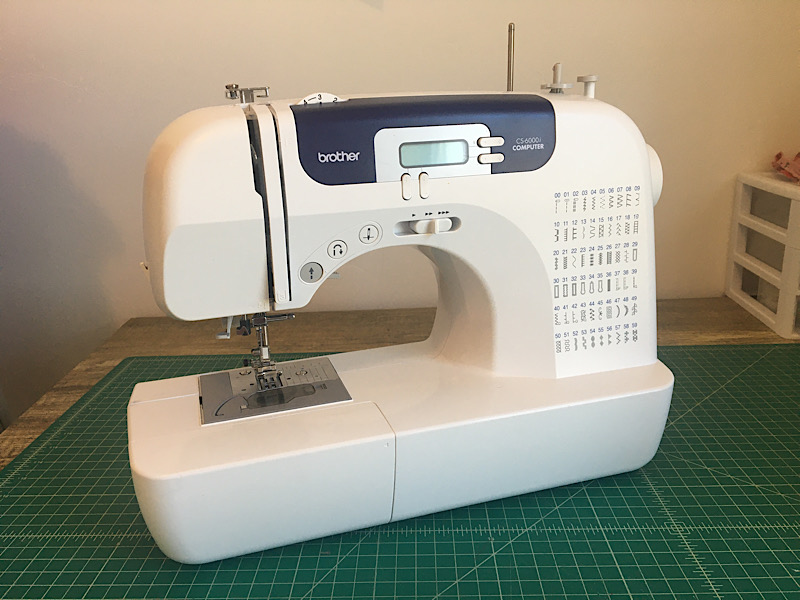

Of course the most basic and important thing you will need to learn to sew, is a sewing machine!
In a lot of the sewing groups I am in, I hear new sewists stressed out about which sewing machine to start out with. People frequently ask “What is the best machine for beginners!”
And I get it. A sewing machine is an investment! But the truth is, almost any machine will work just fine to start with.
You can find a machine on Facebook marketplace, or Ebay, or buy an inexpensive starter machine, it doesn’t matter. I even know someone who uses her mom’s vintage sewing machine and it still works just fine!
I personally recommend getting a machine that can do more than just straight stitches. When looking for a starter machine, here are some good things to look for:
- Capable of straight stitches, and zig zag stitches (at least)
- Comes with bobbins, and basic presser feet
- Is from a reputable brand
The sewing machine I currently use (and have been using for over 10 years) is just a home sewing machine, but I have been able to sew for clients on the side as well as mending and quilting for my family.
It is the Brother cs6000i, and I am very happy with it!
2. Sewing Machine Needles
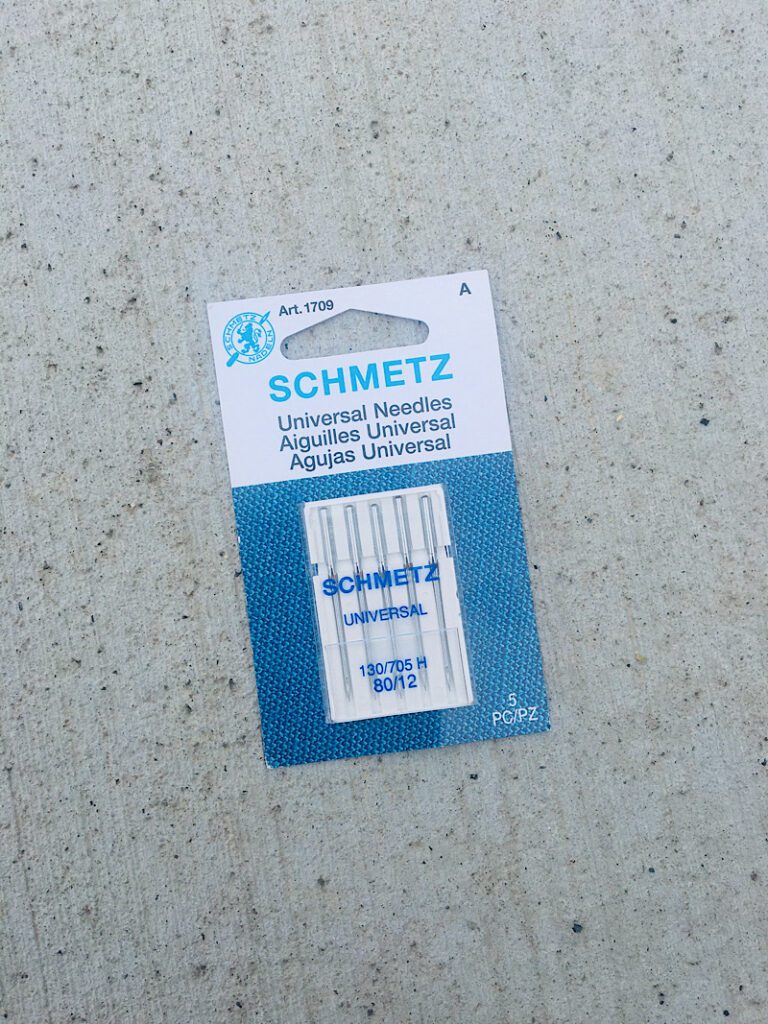

You can’t use your sewing machine without sewing needles! They are the number two most important item you need to have on hand.
In fact, I regularly keep extra packs of sewing needles in my drawer just in case I break one. (Which happens sometimes!)
Most sewing machines will come with a starter pack of sewing needles that are good for a broad variety of fabrics and projects. These are called universal needles, and will be great to start out with.
Depending on what you would like to sew, you may also need heavy duty/denim needles, or knit/stretch needles.
I recommend having at least one pack of extra needles on hand at all times, especially for beginners!
You should also know that using the correct size of needle is essential, so make sure you read your sewing machine’s manual to see what size it calls for. Using the wrong needles can cause needle breakage, skipped stitches, and damage to your machine.
3. Thread
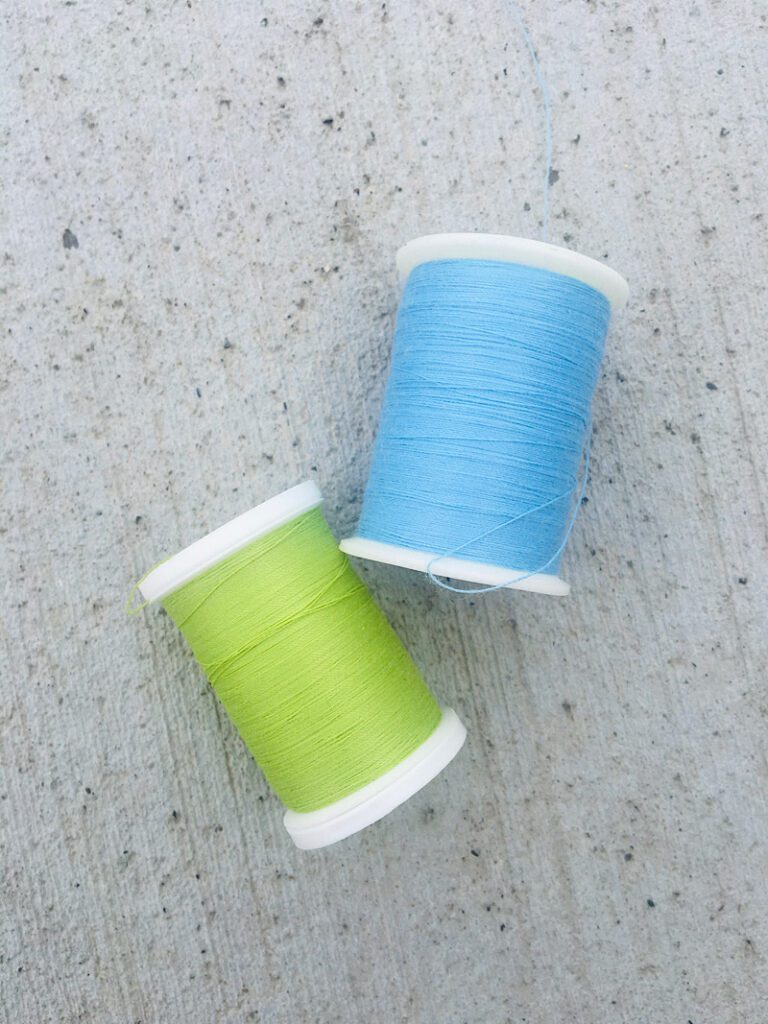

Thread is the third most important thing you need to be able to learn to sew. The thread you buy for your machine comes on a spool, and comes in various lengths, colors, thicknesses, and materials.
Your sewing machine may come with a spool to start with but if not, you should try to pick up a spool of white thread and a spool of black thread. These two colors will get you through many projects without having to switch so often. (Although you totally can use any color you want!)
Polyester thread is very strong and great to sew with on all sorts of projects.
4. Hand Sewing Needles
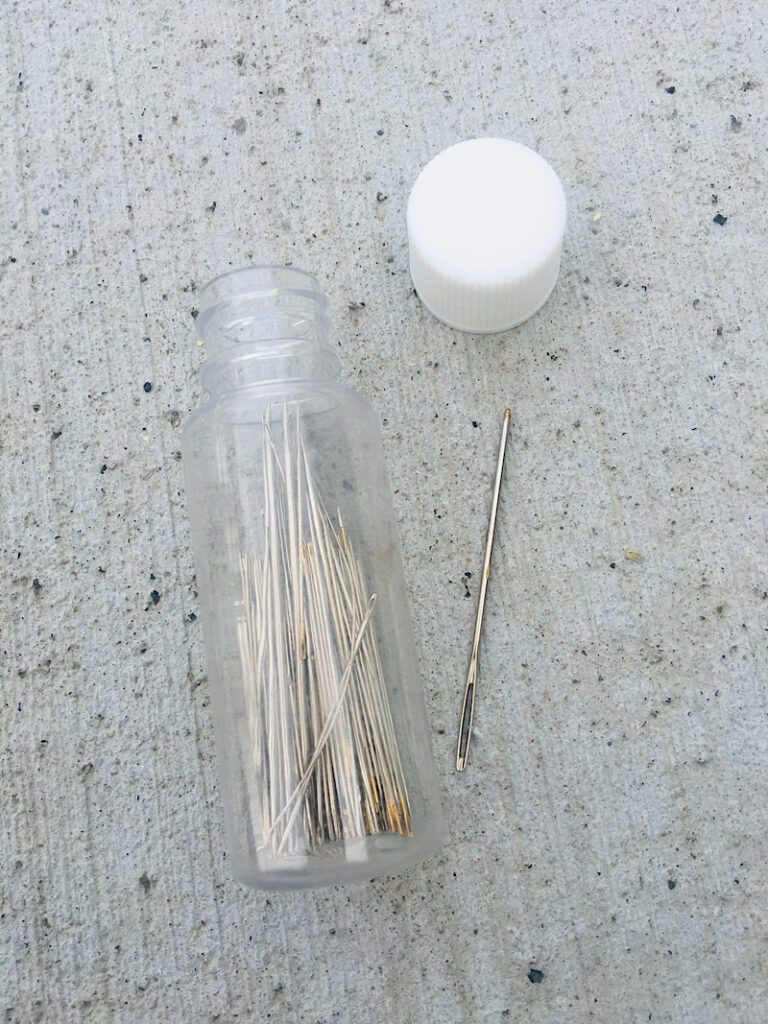

Hand sewing needles will be helpful to you even if you are mostly trying to learn your sewing machine. There are many times when you start a project on a machine, and finish it by hand with an invisible ladder stitch. (Such as closing up a scrunchie, sewing hair on a doll, or mending a stuffed toy.)
Hand sewing needles are also a good way to learn how to sew on beads, patches, and buttons (although I actually prefer to use my machine for that these days.)
A simple pack of various length hand needles will be fine to start with.
5. Fabric Shears
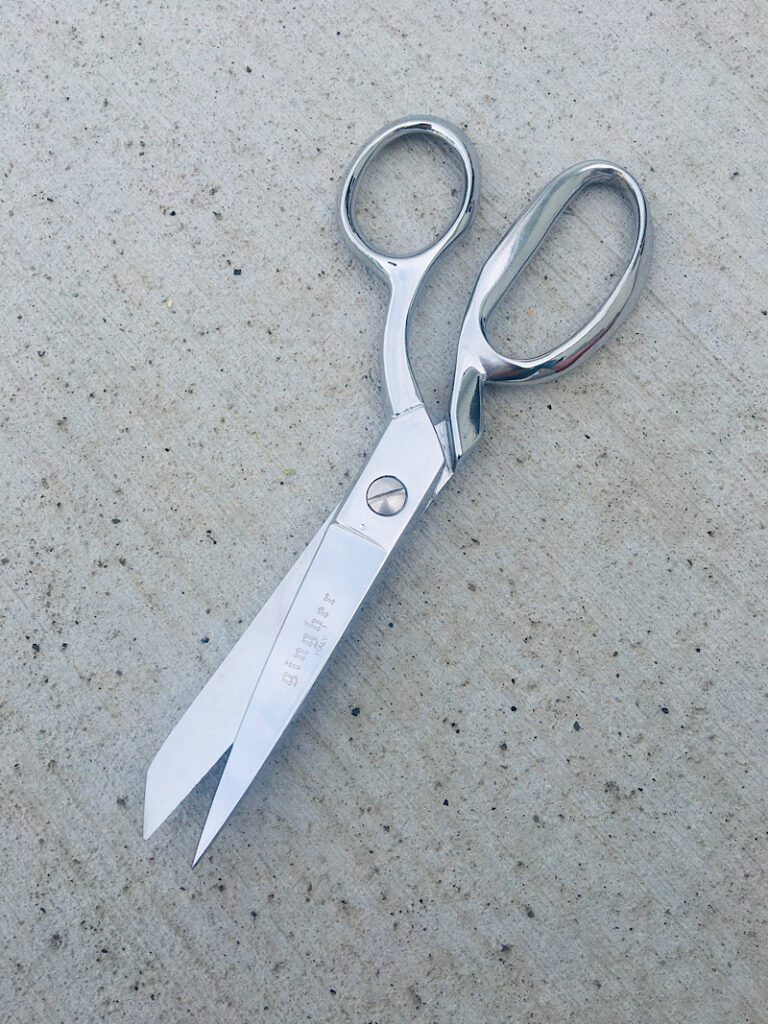

Fabric scissors are different than craft scissors. They are not symmetrical. One side is flat so that you can easily cut fabric on a table top!
Sewing shears are also very sharp, and should only be used to cut fabric so they don’t get dull. I love my Gingher brand scissors, they have lasted a very long time and can be sharpened when needed.
A good pair of sewing shears is a bit of an investment, but trust me, you do not want to try to cut fabric with bad scissors!
6. Straight Pins & Cushion
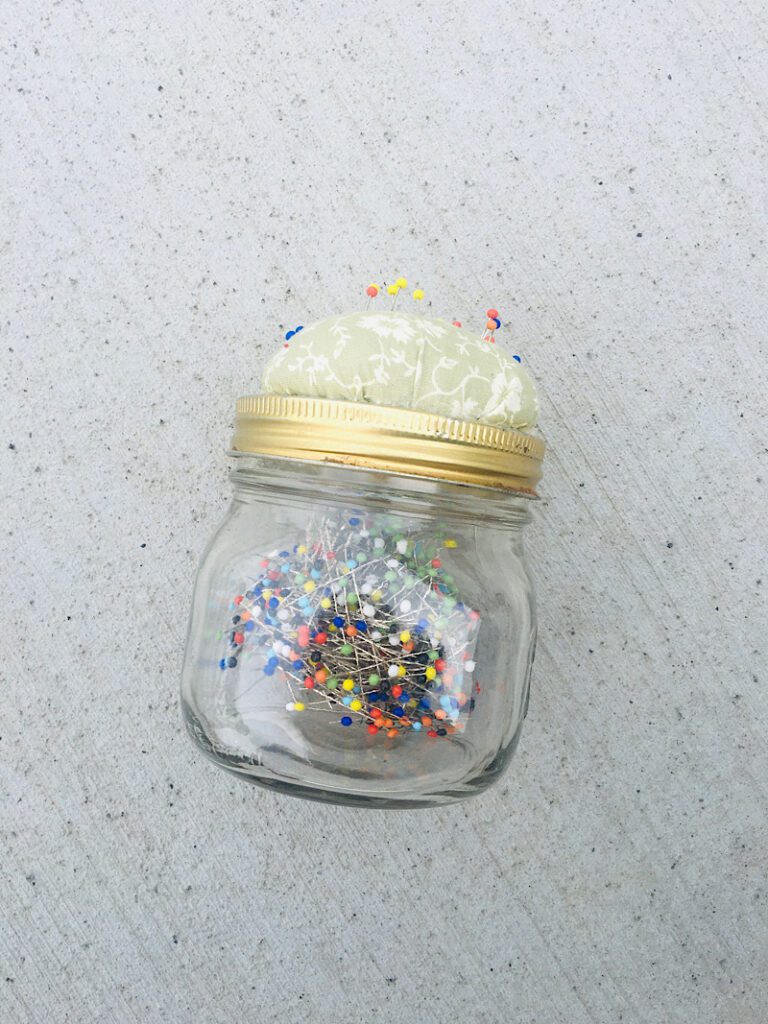

Straight pins are different than sewing needles, and different than safety pins.
Straight pins are long, straight, and have a plastic ball or shape on the top to help you grab them and see them easily when they are inserted into the fabric.
There are lots of ways to store straight pins such as in a jar like I have pictured here, in a plastic container, on a magnet pin holder, or in a pin cushion.
A pin cushion makes grabbing a single pin easy to do, quickly, without having to reach into a pile of sharp pins! Some pin cushions also have material inside that helps sharpen the pins as you stick them in.
I also want to note that while some people prefer clips to pins, but pins are essential and much more adaptable, and if you can only start with one, start with pins!
7. Seam Ripper
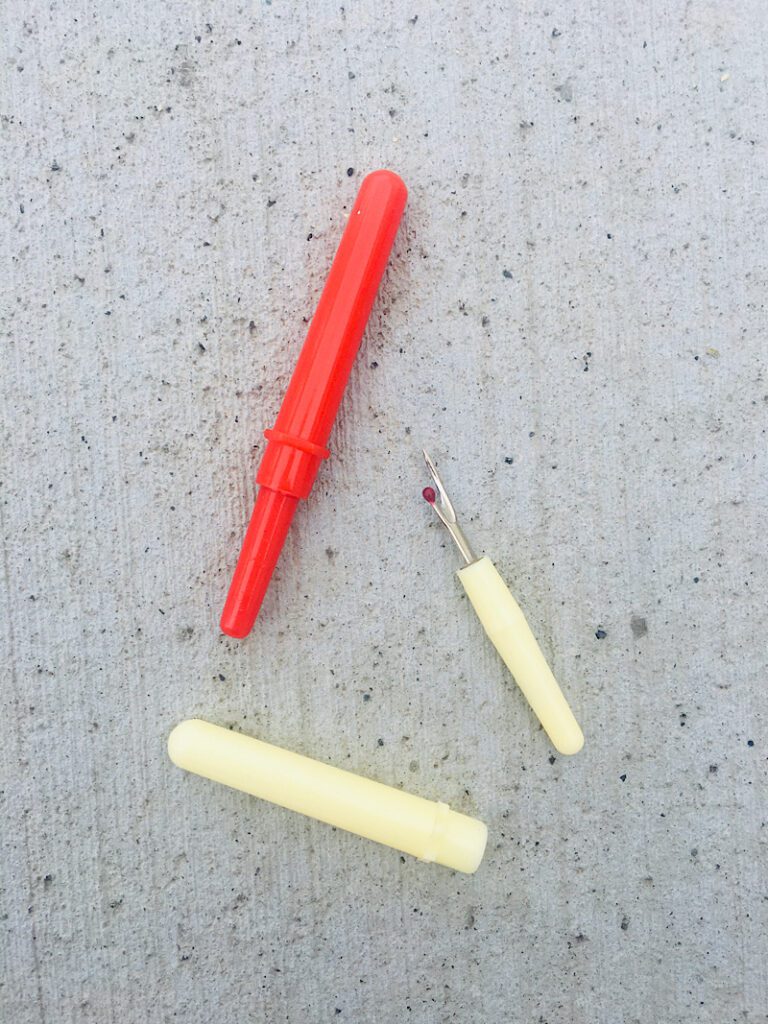

A seam ripper will be your best friend as you learn to sew. I still use mine all the time!
(That’s part of the reason I call myself the “Seam Whisperer”… it’s kind of a joke! Even when you have been sewing for decades, you make mistakes…)
A seam ripper will likely come with your sewing machine, but if not, make SURE you get one.
Seam rippers have a pointed side, a ball, and a sharp knife. You insert the point into the seam and un pick it to remove threads that are in the wrong place. Then you can start over without wasting fabric!
I have found that the little cheap plastic seam rippers work fine, but a nice long one with a round handle is much easier to use and grip!
8. Measuring Tape
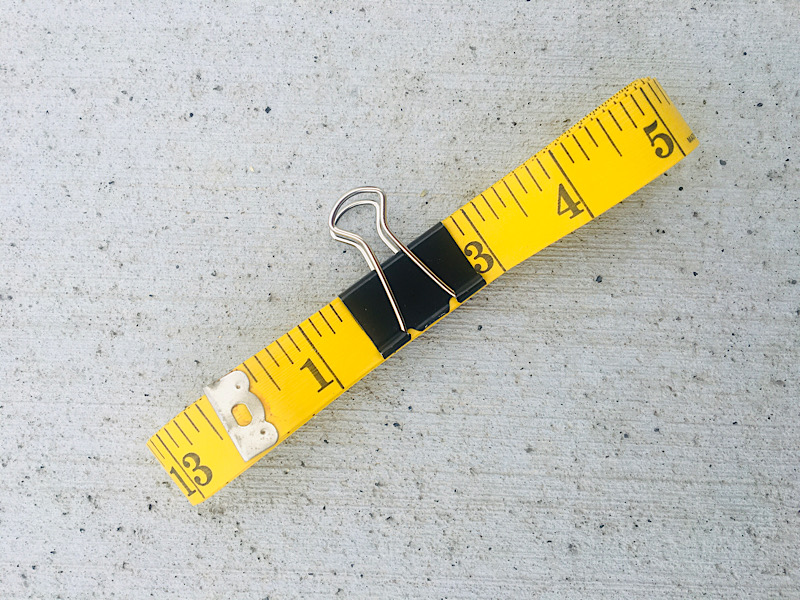

A flexible measuring tape is an essential sewing tool because you can measure curves! They come in handy when measuring around the body, such as for a waistline or arm circumference, or around the curve of a pattern piece.
Flexible tape measures come in basic plastic-y type measure that has to be rolled or folded up like I have pictured above. I’ve also seen some cute versions that are sewn onto a pretty fabric to make them a bit thicker.
Or you can get a measuring tape that is retractable. They typically don’t come in lengths as long or tape widths as wide, but are easy to store.
I have a super great list of the cutest sewing tape measures I could find, be sure to check it out if you need a new one!
9. Iron & Ironing Board
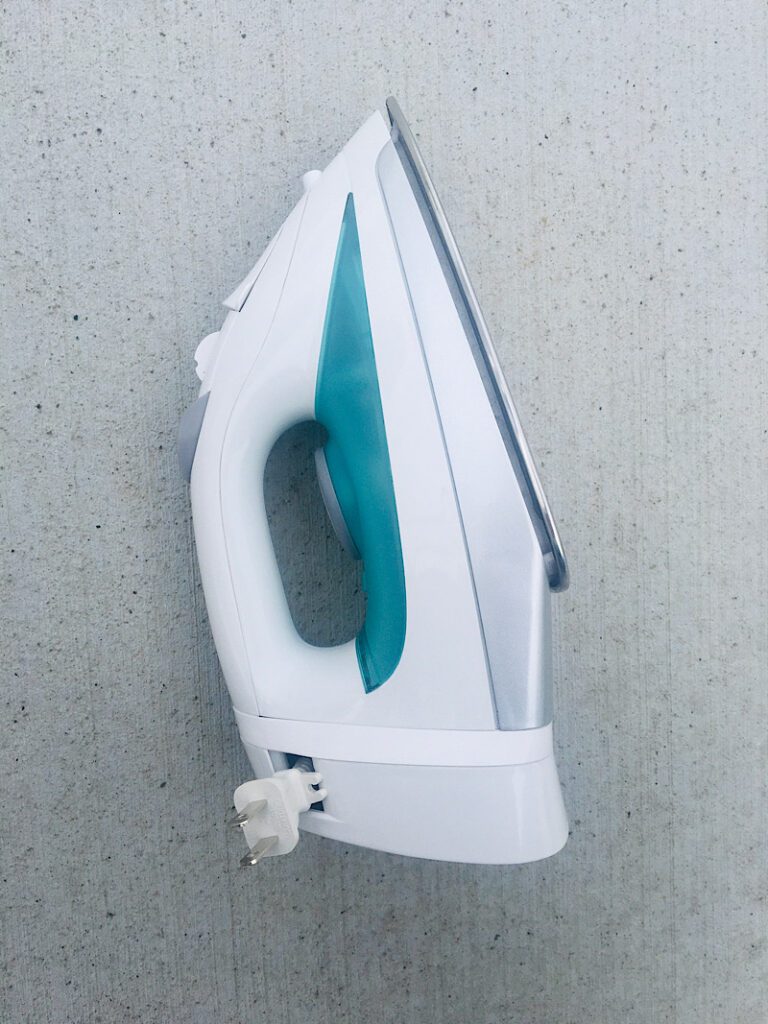

Steam irons and ironing boards are important for more than just clothes! They are used ALL the time in sewing for things such as:
- Pressing flat seams on a quilt
- Ironing out wrinkles on fabric that was stored wonky
- Attaching fusible interfacing
- Steaming a wrinkle out of cloth
- Using HTV (heat transfer vinyl)
You can get a cheap iron from just about any craft store or home store. I got mine from Walmart, and I love that it has a retracable cord.
When choosing an ironing board, think about how you will store it. I had a large, full sized ironing board for years, but just a few weeks ago I decided to donate it and get a table top one that folds up and can hang in a closet.
I personally love the smaller, table sized ironing board, and the one I got was less than $15 at Walmart.
10. Bobbins
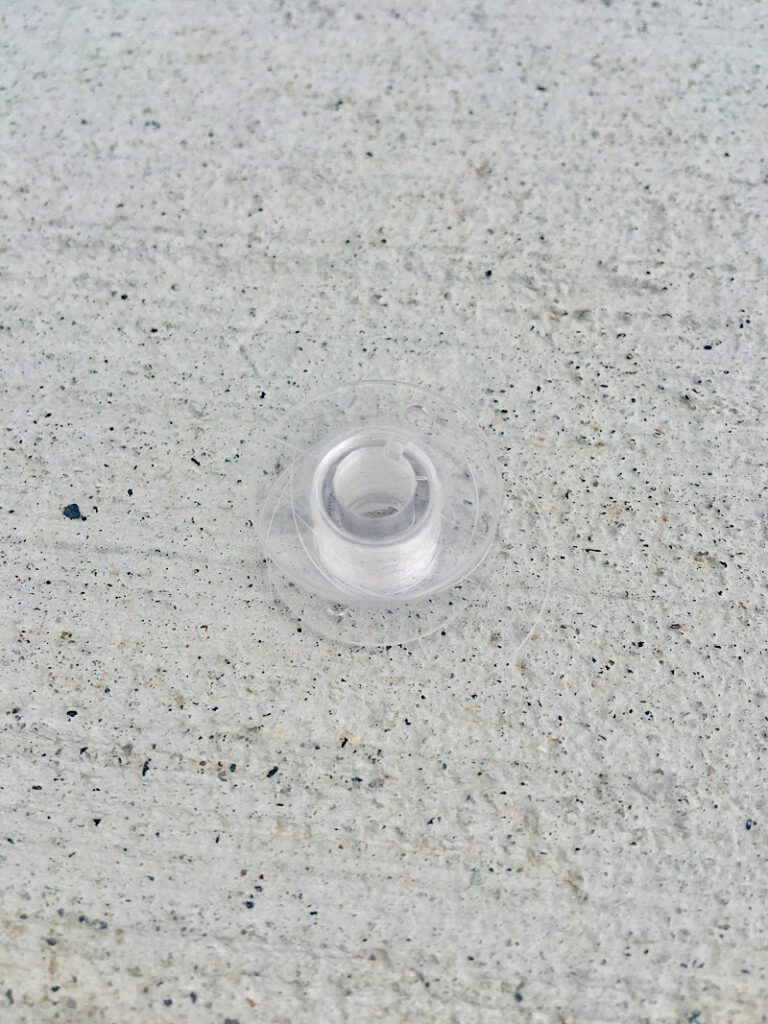

A bobbin is used to make the bottom set of stitches on your sewing machine. You wind thread around the bobbin and insert it into the bobbin case, and as you sew the threads chain to make a stitch.
Bobbins are not universal, and your machine will probably come with several to start you out with. If you need to buy extras, make sure to read the manual and get ones that are the right size!
11. Presser Feet
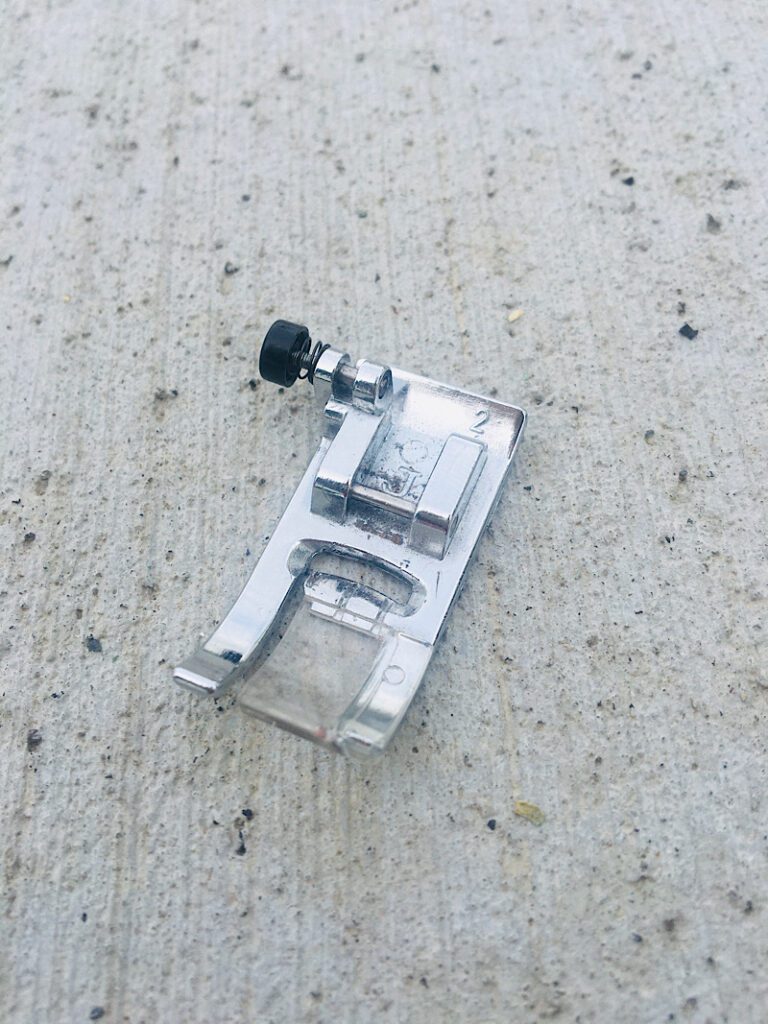

My sewing machine came with a set of basic presser feet including:
- A zig zag presser foot
- A zipper foot
- A buttonhole foot
- A straight stich foot
- A futton foot
For beginners these feet are probably more than enough, but you need to double check to see what feet your machine comes with. Then you can decide which ones you want to get if you need them.
You can read my guide all about presser feet here to learn what they look like, and what they do!
EXTRA – Optional Sewing Supplies
These sewing supplies are SO nice to have, but over 20 years I have realized that these are the items I use less often, and could technically do without (although they do make things much more convenient!)
If you can get these items right away, go for it! If you have to budget them for later, that will work too.
Pinking Shears
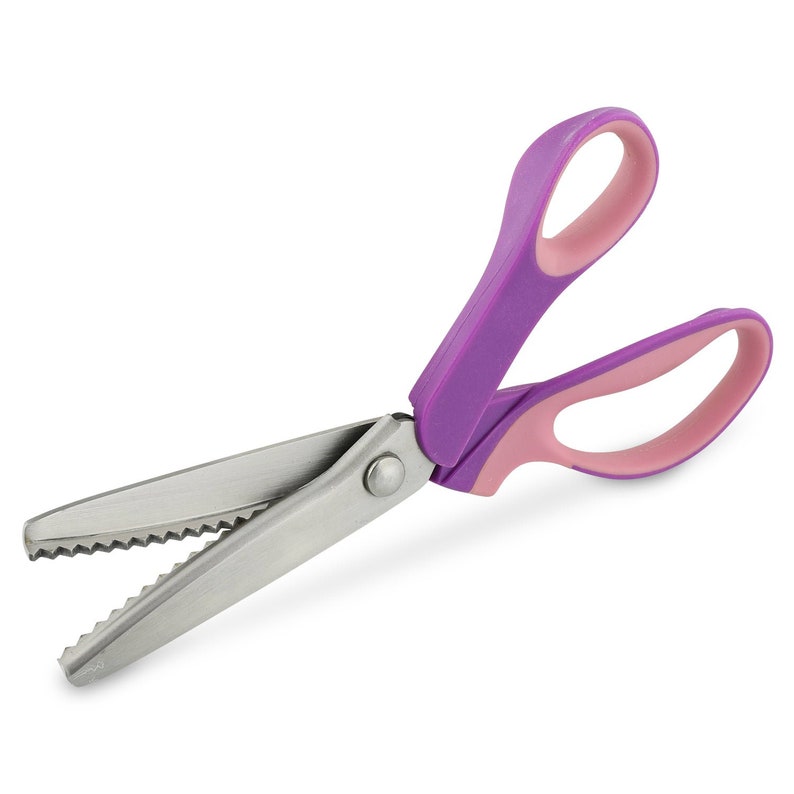

Madam Sew Pinking Shears – Etsy
Pinking shears are SO useful, and now that I have them, I make use of them! But the truth is that I went many years without them.
Pinking shears cut a zig-zagged edge into the fabric which helps reduce fraying, and is also a quick way to cut notches on a curve.
I love using my pinkers, but they aren’t the most important thing to get first. Invest in a great pair of regular fabric scissors first.
Thread Snips


Portland HQ Thread Snips – Etsy
Thread snips are one of those things that some people swear by… and some people don’t care for!
I fall into the later camp. I don’t use thread snips at all, because I just used my fabric scissors and my seam rippers.
If you do a lot of sewing that has lots of tail ends, like appliques, then perhaps you might like a pair of thread snips. But to me, they just take up space.
Sewing Clips
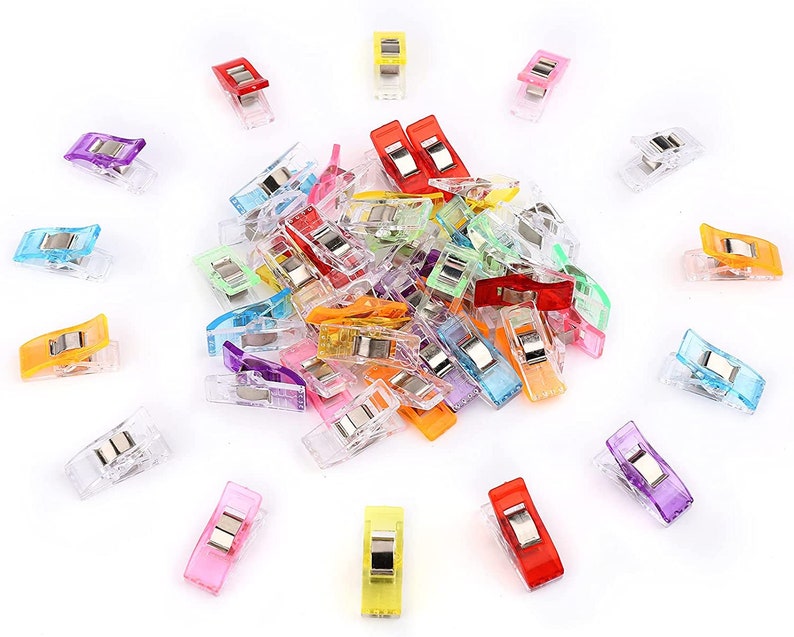

Bedazzled Supplies Sewing Clips – Etsy
Sewing clips are used to hold fabric together instead of pins. There are times when clips are more useful than pins, such as when fabric is slippery, delicate, lace-y, or thick.
Some seamstresses LOVE clips, but I have actually never used them. I have used small clothes pins AS clips, but I like pins just fine.
Sewing clips are not essential, in my opinion.
Sewing Gauge
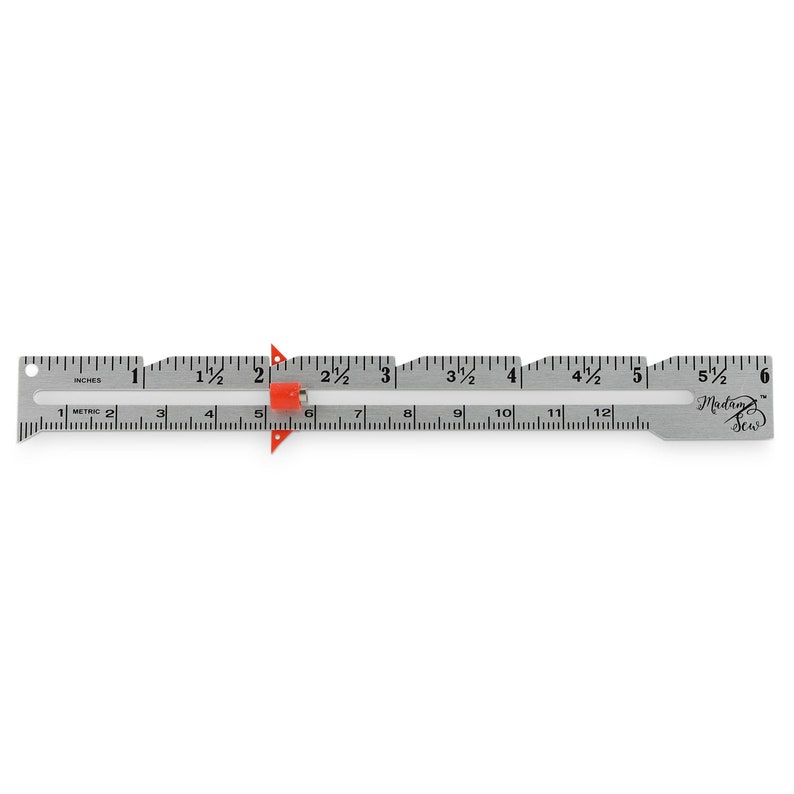

This might be a controversial one, but I have found that I never use my sewing gauge! I just use my tape measure and ruler instead.
A sewing gauge is helpful to measure precise seam allowances and measurements, and it has a marker to help you keep that measurement and make marks fast.
I personally don’t sew enough projects that require one. If your sewing machine or sewing supply kit doesn’t include one, you may not even miss it!
Rotary Cutter & Mat
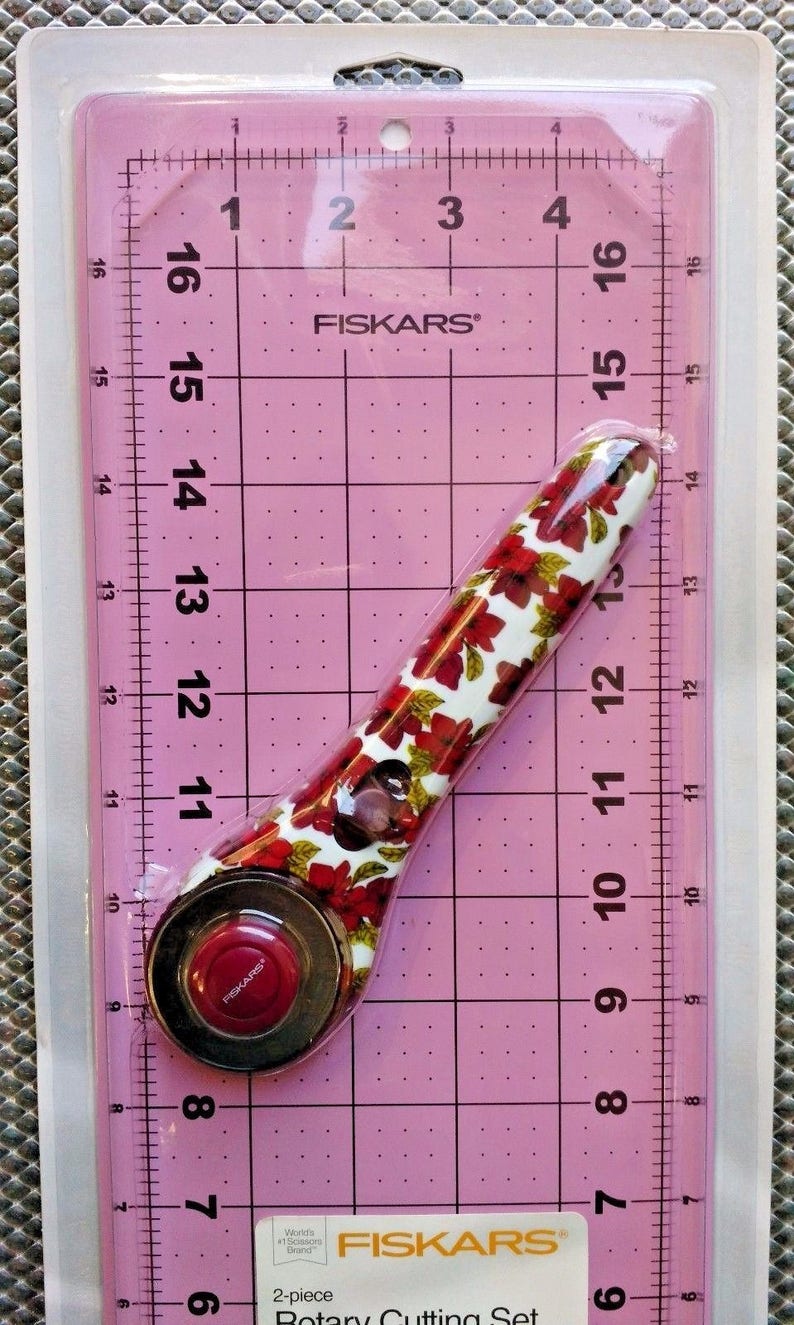

A rotary cutter, ruler, and mat are some of my FAVORITE sewing tools. I use them ALL the time. BUT they are just conveniences, not essential for what I do.
They make quick work of cutting straight lines, so if what you want to sew is quilts, then you will probably need to get some. But for a beginner, you can learn to make cuts with scissors just fine for now.
Marker or Chalk
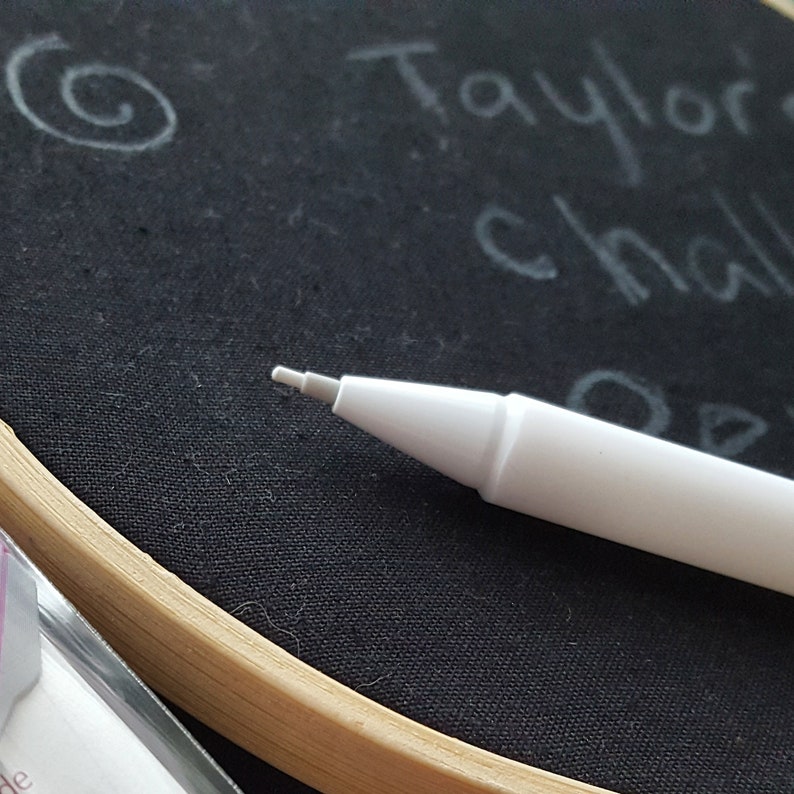

Embroidery Tailor’s Pencil – Etsy
Disappearing ink markers or tailor’s chalk are great for making alterations. You use them to draw a line where you want to sew or cut and then you’re able to wash the line off later.
They are super handy, but not a necessary tool for brand new sewers, in my opinion.
Serger
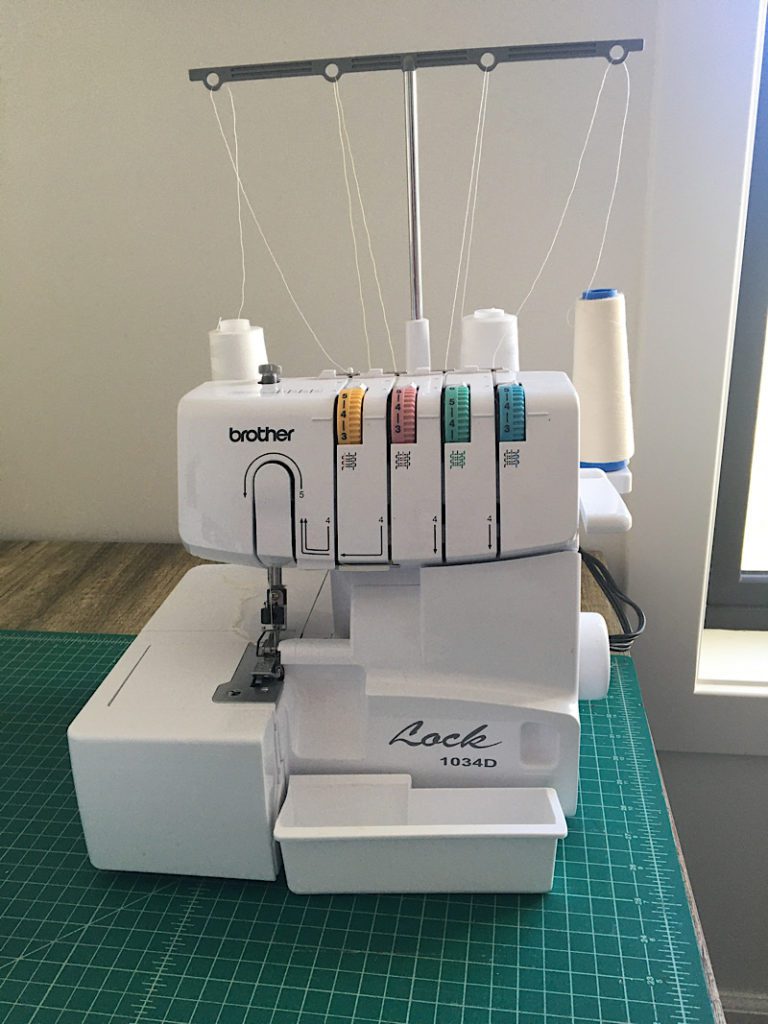

Last but not least is the serger. Don’t get me wrong, I LOVE my serger. I use it every day. (I use a Brother 1034D, if you want to know my thoughts on it!)
But the truth is, because I have a serger, I don’t use my sewing machine to it’s fullest potential.
Serger’s make professional edges and are great since I sew mainly clothing, but many sewing machines can overcast the edge with a zig zag or overcasting stitch too.
Don’t invest in a serger just yet.
Sewing Kits For Beginners
You can purchase your sewing supplies separately, which is great if you want to purchase items of a certain color, design, or customize them with your name. But you will probably get the most bang for your buck when purchasing them in a kit!
Here are some great options for beginners sewing kits that include many of the items listed here in this post. I hope this helps you find what you need, fast!
Starter Sewing Supply Kit
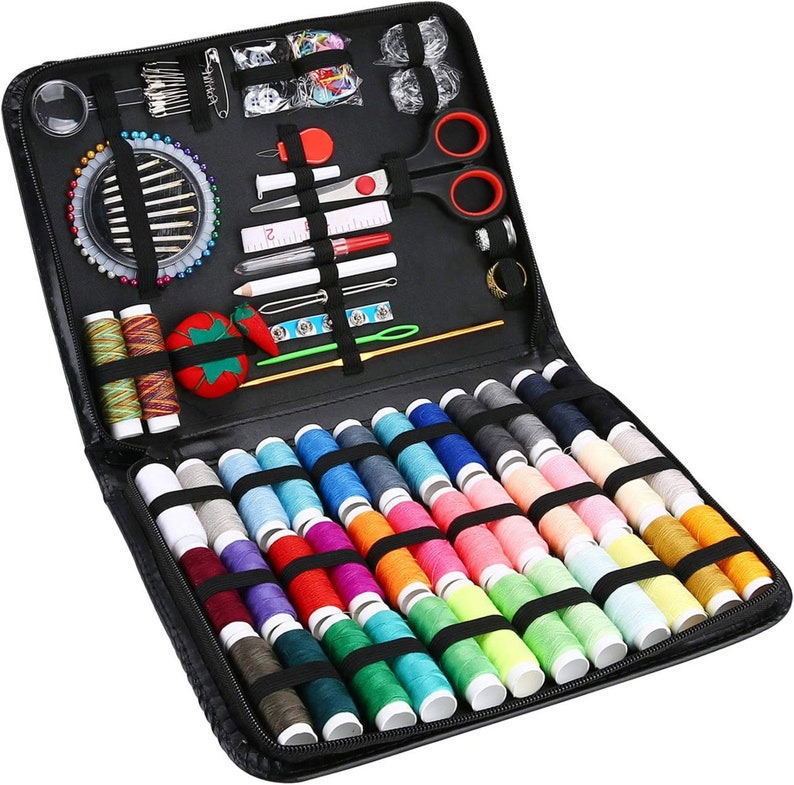

This beginners sewing supply kit comes with a ton of thread options, as well as an awesome organizational case for all the tools inside!
Here are some of the items it includes:
- 40 Color pins
- Thread
- Sewing Neeldes
- Spare Buttons
- Pins
- Bobbins
- Sewing Clips
- Pumpkin Pin Cushion
- Scissors
- Measuring Tape
- Seam Ripper
- Marking Pencil
- Thimble
- & more
Mason Jar Sewing Kit
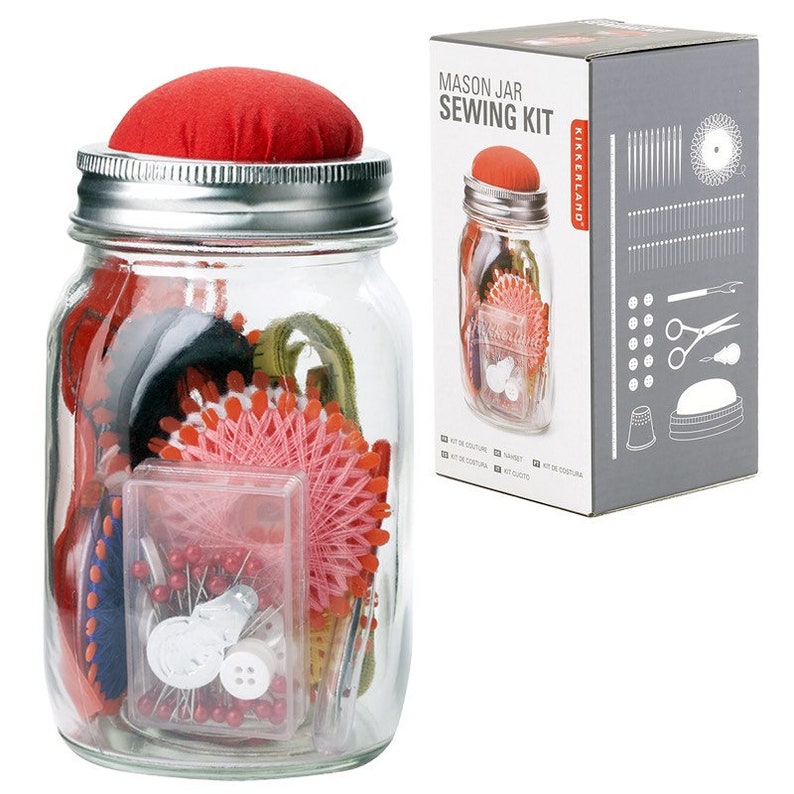

This adorable sewing kit in a jar is functional and pretty! It would also make a great gift!
This smaller kit includes less items, but they are mostly all a coordinating color (red) which makes a nice set. Here is what it comes with:
- A pincushion top
- 10 hand sewing needles
- small scissors
- 50 straight pins
- needle threader
- thread
- seam ripper
- thimble
- tape measure
- buttons
I hope this list of essential (and non essential) sewing supplies for beginners was able to guide you on what you need to buy when you are learning how to sew!
Let me know if you have any questions in the comments below, or join the Seam Whisperer community to ask any questions!
